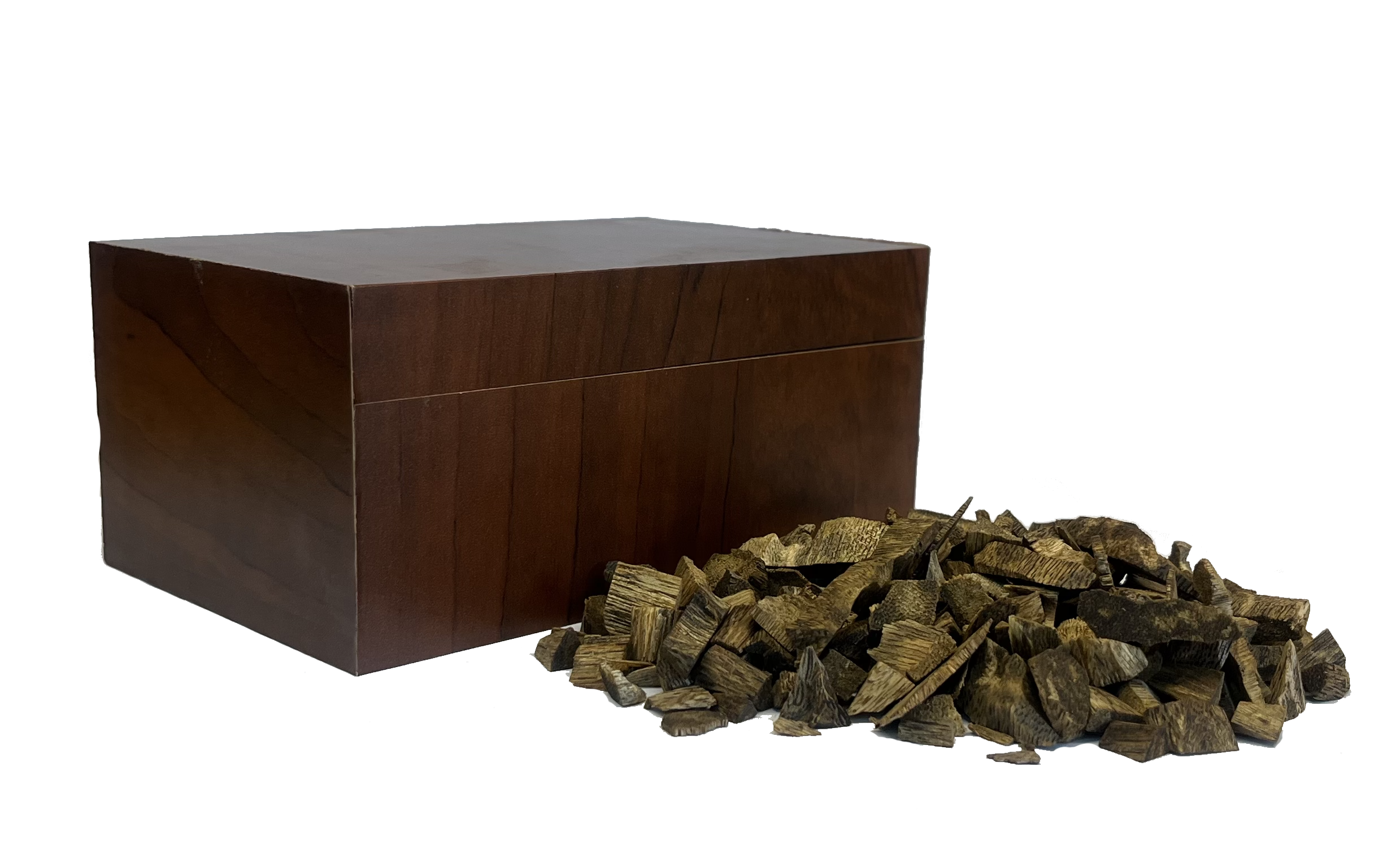
Kynam, or "kyara" as it's known in Japan, is an extremely rare agarwood used in the perfume and incense industries for its complex and intense scent. It is the most popular "agarwood", a name used in the Arabian Peninsula to describe the dark, resinous wood produced in the heartwood of the agarwood tree in certain circumstances. A gram of kynam can fetch over $10,000, making it by far the most expensive wood on earth and one of the most expensive natural materials.
Essentially, kynam is the best agarwood money can buy, importantly all types of agarwood are relatively expensive. It has been an important part of Chinese, Japanese, Indian, Arabic and Southeast Asian cultures for thousands of years. It has always been a precious commodity, but demand for it has increased dramatically in recent years, and with it the price.
The heartwood of the agarwood tree is relatively odorless and pale in color, but under certain conditions the tree produces a dark resin, resulting in the prized agarwood. For centuries, humans have known that agarwood only produces agarwood when it is harmed. Theoretically, various stresses, such as being struck by lightning, being invaded by ants or bees, or even being destroyed by large animals, can cause agarwood to develop, but ultimately it all comes down to being infected with agarwood.
Phialophora parasitic is a mold that produces agar, aloe, or agarwood in the heartwood of agarwood trees. This resin-embedded wood has a strong, identifiable scent and is used both as incense and as the essence of high-quality, expensive perfumes. People have learned how to infect agarwood trees with mold to stimulate agarwood production, and there are now plantations dedicated to the production of agarwood in every Asian country from Indonesia to Myanmar and Vietnam.
It is worth noting that although agarwood produced in plantations is not cheap, it is far less expensive than wild agarwood, especially high-quality agarwood. This is because plantation agarwood can be harvested only a few years after infection, whereas high-quality wild agarwood can be hundreds of years old and command a hefty price tag. There is no more expensive agarwood than kynam.
There is no way to tell whether an agarwood tree contains or will contain kynam. No expert in the world can identify resin-filled wood without first smelling it, and in most cases the complex aroma of kynam is only discovered after burning the wood chips.
Because wild agarwood is so rare and valuable, wild agarwood trees are becoming a rare sight across Asia. The thought that a few grams of the world's most expensive wood could change the life of anyone who discovers it has led many people on a wild treasure hunt that often goes nowhere. And because the only way to find agarwood is to chop down and split the tree, wild specimens have become rare.